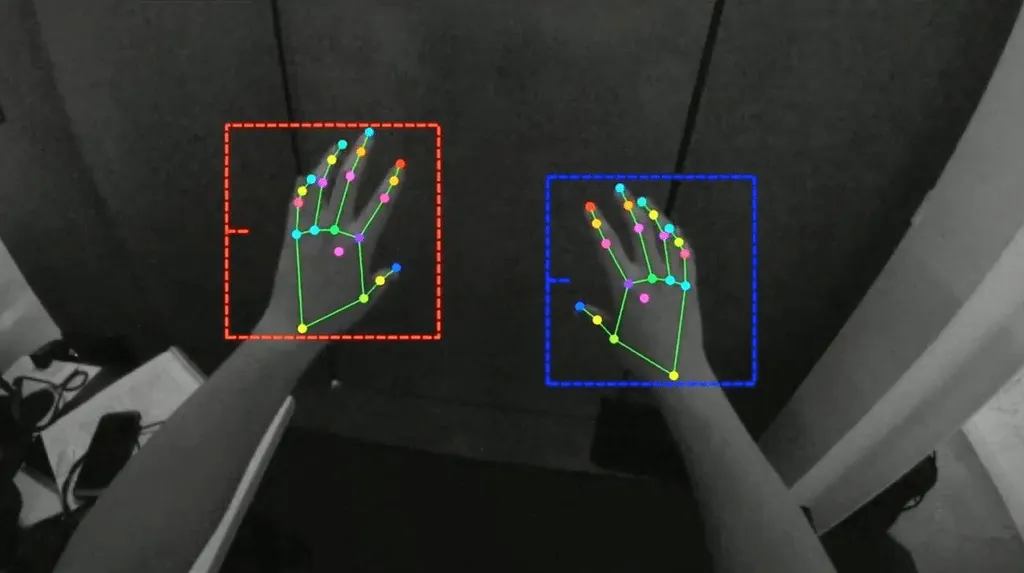Oculus Quest 2 developers can now enable a new ‘High Frequency Hand Tracking’ mode in their apps, increasing the tracking rate from 30 Hz to 60 Hz.
Facebook claims the mode improves controller-free hand tracking quality, as well as reducing its end-to-end latency by 10%. Its internal ‘Strike Team’ VR app dev group enabled the new mode in the Tiny Castles demo and reported the following results:
“In Tiny Castles, we observed that high frequency hand tracking results in a slight reduction in perceived latency but also significantly improved tracking quality during fast hand movements. There were no perceived changes regarding jitter and occlusion.“
However, Facebook says there is a “slight increase in jitter” for low light conditions, which it plans to address in a future software update.
Developers can enable High Frequency Hand Tracking by adding this line to the Android manifest:

Oculus apps can set the CPU & GPU clock rate – not to a specific value but to 5 predefined levels (0-4). This lets developers balance performance and battery life.
High Frequency Hand Tracking requires more background computing power to process the cameras at double the normal rate. Facebook says this can cause headset overheating (leading to a sudden shutdown), so to avoid this, apps using the feature will be capped to CPU level 3 and GPU level 2.
That means while enabling this feature is technically a one-line change, actually making it work in real apps could require significant optimization work.
Going forward, even apps using low frequency Hand Tracking will be limited to CPU & GPU level 3, to avoid overheating, when apps release their next update.





























